
Saildrone Circumnavigates Antarctica
Back in late March, a sail drone made the first-ever autonomous rounding of Cape Horn. Richard Jenkins, the CEO and co-founder of the Alameda-based Saildrone, said that the vessel, known by the designation SD 1020, had been “released from New Zealand two months ago, and is on track for a six-month circumnavigation of Antarctica.” The drone had been “bouncing off a few icebergs in ‘iceberg alley’, so it has been a bit tougher than expected, but still going strong.”
On Saturday, 1020 completed that mission, a 13,670-mile, 196-day circumnavigation of Antarctica — marking another first-ever in autonomous seafaring and “a technological feat that was unfathomable just a decade ago,” according to the National Oceanic and Atmospheric Administration, or NOAA, which partnered with Saildrone for the mission. Saildrone said on its website that “SD 1020 survived freezing temperatures, 15-meter [50-ft] waves, 130 kph [80 mph] winds, and collisions with giant icebergs.” The sail drone was collecting a range of data on weather, seal and krill populations, and levels of CO2 in the air and water, according to the NOAA press release.
“On four previous voyages in the Southern Ocean, the wings on our saildrones broke after just a few days, so we went back and built something we thought was indestructible,” Jenkins was quoted as saying in the press release. “It was a long shot, but it worked out exactly as we hoped.”
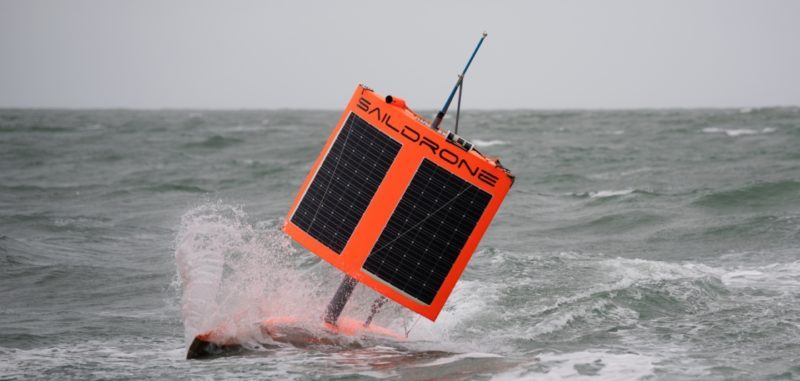
Sail drone 1020 was part of a three-vessel fleet that departed New Zealand on January 19. The other two sail drones, 1022 and 1023, which were initially forced to return to port for repairs, are en route around Antarctica again.
“Until recently, scientists assumed that the Southern Ocean steadily absorbed large volumes of CO2 from the atmosphere — a big contributor to the entire ocean’s uptake of up to 40% of the greenhouse gases driving global warming,” NOAA said. “However, scientists also knew shifts in winds and circulation around Antarctica could alter CO2 uptake from the atmosphere, and recent measurements from instrumented Argo floats [buoys packed with scientific instruments] showed that under certain conditions the Southern Ocean could emit CO2 instead of absorbing it.”
In our August 2018 interview at Saildrone, chief operating officer Sebastien de Halleux said that humanity is moving toward a “quantified planet,” where the abundance of data will start to lead toward incremental epiphanies that will be significant in the aggregate. Statistics about CO2 levels might seem too academic to be relevant, but such data can become the building blocks that lead to innovation. “We know more about other planets than our own,” de Halleux said in a 2017 TEDx Talk. With the completion of this latest mission, Saildrone hopes to unlock more of the planet’s secrets.
We tip our hats to the many Bay Area sailors who are part of the Saildrone team.
Brickyard Cove Marina
Blistering Paces Set Records
SailGP Team Breaks 50-Knot Barrier
Sailing on the Solent yesterday, Dylan Fletcher’s Great Britain SailGP Team achieved what no other race team in the world has done: They broke the elusive 50-knot speed barrier. The historic moment occurred during the British team’s fourth day of training off the Isle of Wight. The team was practicing for SailGP’s European debut in Cowes on August 10-11. Fletcher and the crew (Chris Draper, Stuart Bithell, Matt Gotrel, Neil Hunter and Richard Mason) flew at a speed of 50.22 knots on the 50-ft foiling catamaran.
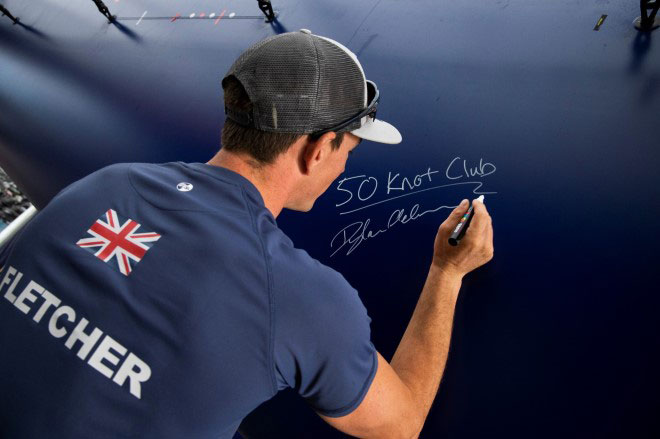
“We’re always trying to push the boundaries, and, to be honest, it feels pretty wicked to get a notch up on Tom Slingsby,” said Fletcher of the rival helmsman. The Australian Slingsby initially believed he’d hit 50 in San Francisco. “We knew this stretch of water, with the right conditions, could set us up well for breaking this record.”
Earlier in the day, the Brits thought that they had reached 49.54 knots of boat speed. Then SailGP data analyst Scott Babbage interrupted the team’s debrief to set the record straight. He reported that when the higher-frequency data was pulled off the F50, it revealed that the British team had recorded 50.22 knots in 19.3 knots of wind speed.
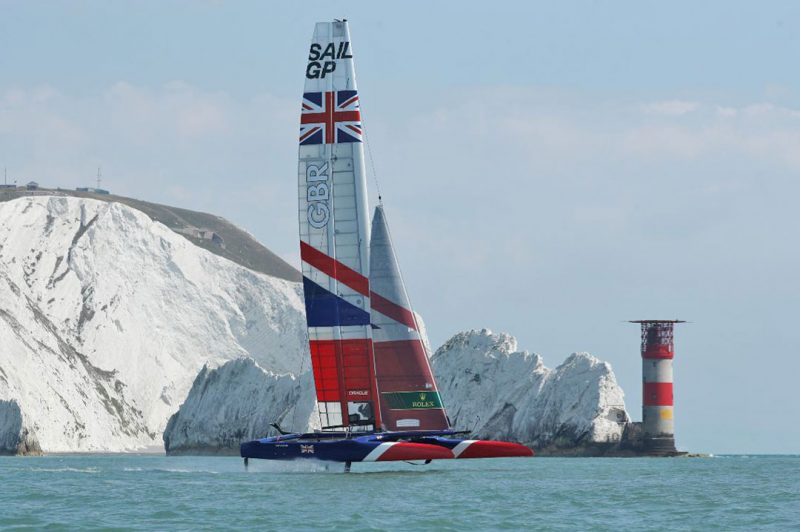
Great Britain will take on China, France, Great Britain, Japan and the United States this weekend in front of the SailGP Grandstand along the Cowes seafront. All six teams will now seek to break 50 knots for the first time in a race, taking advantage of the strong sea breezes and tidal flows in Cowes. Fans at home can find out how to follow the action here.
Australian Paul Larsen holds the outright speed record for sailing, with an incredible peak of 68.01 knots, set in 2012 on a straightaway in Walvis Bay, Namibia. He set the record in the Vestas Sailrocket 2, a craft built expressly for that purpose. Learn more about that here.
Rolex Fastnet Race Record Falls
Another record was broken this week in the UK, this time by a French team, on August 4. The Rolex Fastnet Race set sail from the Isle of Wight on August 3. A day later, on the 105-ft maxi trimaran Edmond de Rothschild, aka Gitana 17, Franck Cammas, Charles Caudrelier, David Boileau, Erwan Israël, Morgan Lagravière and Yann Riou beat François Gabart’s Macif with a lead of just 59 seconds.
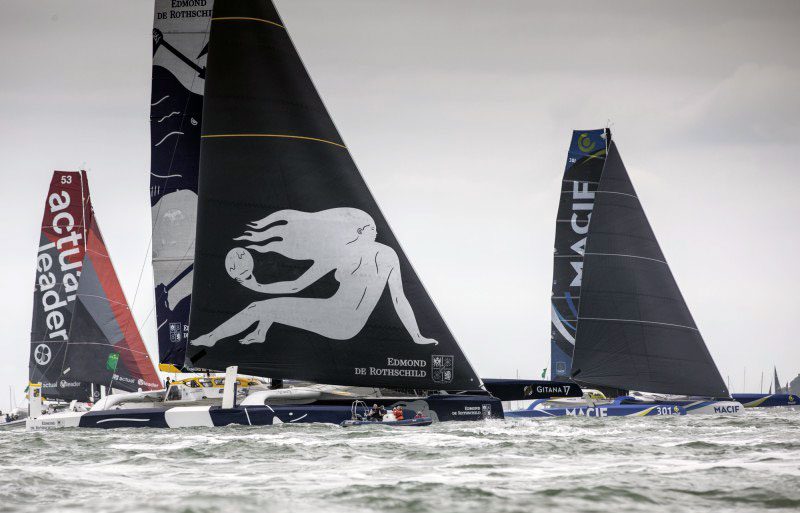
The two Ultim crews enjoyed a thrilling duel, racing within sight of each another throughout the 600-mile course. Gitana 17 set a new record of 1 day, 4 hours, 2 minutes and 26 seconds. Loïck Peyron and the crew of Banque Populaire V set the previous multihull record of 1 day, 4 hours, 45 minutes and 34 seconds in 2011.
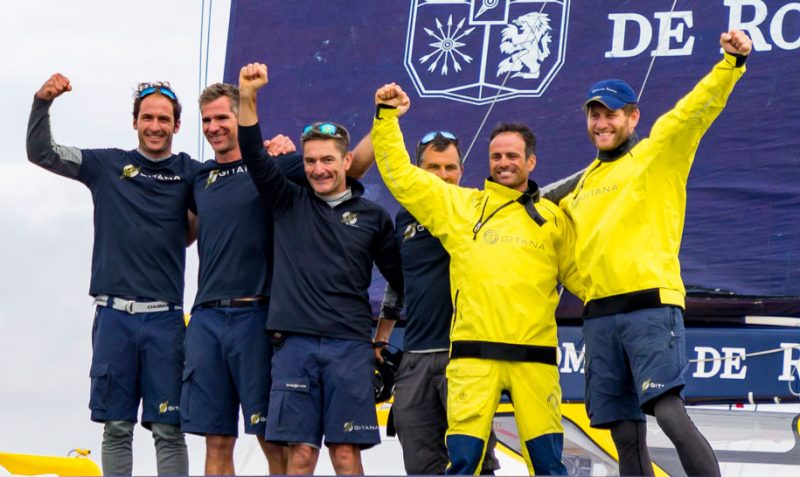
To see how the rest of the 48th Fastnet played out, go to www.rolexfastnetrace.com.
Bay Area Sailors Racing in Sweden
Bruce Stone of San Francisco wrote on Tuesday to check in from Lysekil, Sweden. His wife, Nicole Breault, is competing in the Women’s Match Racing Worlds. “Her team are waiting ashore to rotate into a boat. There are 12 teams sharing six boats. They are racing in Fareast 28R, a 9-meter-long sprit boat with a large 77 m2 asymmetrical kite. Teams can have four, five or six crew within a weight limit of 340 kilos. It appears that every team consists of a skipper plus four crew. There is a seeding round-robin, where they eliminate four teams and rank-order the remaining teams for the quarter-finals, with the top team racing the bottom team and so forth.”
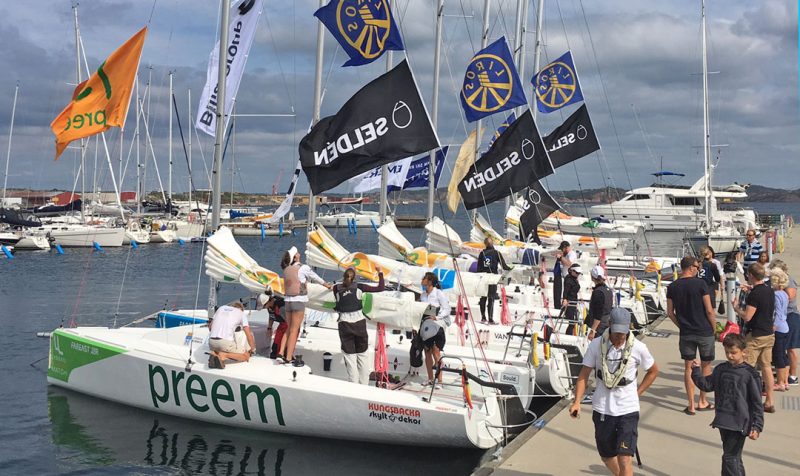
“The opening ceremony yesterday with a parade of athletes from the town square carrying their national banners was followed by speeches, a humorous but obviously meaningful lecture by police chief on avoiding drunk sailing and driving, then an intro of the teams, a public concert, and (for competitors, umpires and race committee) an Asian-fusion vegan dinner.”
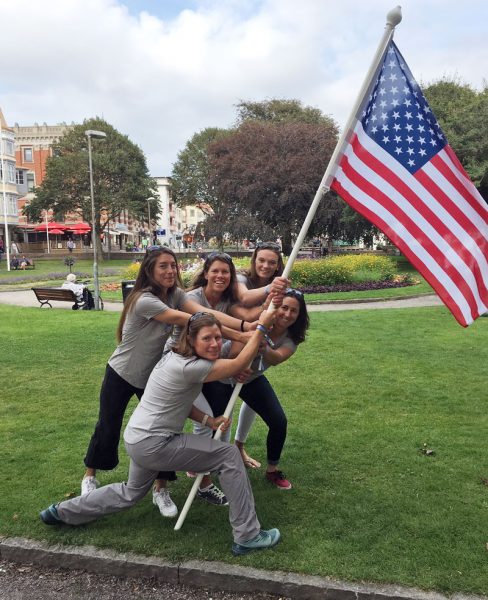
“Today we are greeted by rain and light wind just under 10 knots. Boats just left the dock for the racing area right off the rocks, which also provide great viewing. The local diving club strung limit buoys to keep the boats out of their training area along the rocks. Apparently, a competitor ran over a diver last year. A pier will come into play, like the Belmont Pier at Long Beach, where a competitor can scrape off a trailing challenger. So teams sailed down to the pier during yesterday’s practice to test laylines to the start.
“The wind is expected to build to mid-teens in the afternoon. Teams might potentially reef, a cause for concern as they have little experience doing this. Some practiced the maneuver yesterday.
“Housing for Nicole and me is a 30-minute walk, which has been enjoyable so far. The commodore lent us a pair of 50-pound three-speed bikes with pedal brakes and kickstands and chains last lubricated with whale oil in the 1950s, so that improved our commute time. But with the impending rain they upgraded us to a new BMW, sort of symbiotic, as it is covered in sponsorship logos. I’m tempted to give them even more publicity value by going on a national road trip and bringing it back on Saturday, but then I’d miss my reportorial responsibilities to Latitude 38, to whom I’m grateful for my press pass.
“When the organizers gave me the keys at 3 p.m., they also made me undergo a breathalyzer test — first time in my life. They take drinking and driving seriously, and in fact the market has 10 kinds of nonalcoholic beer.”
At the end of Day 2, Breault was sitting in seventh place, with four wins and four losses. To follow the action, go to https://lysekilwomensmatch.se/en/home-2-0. Learn more about women’s match racing at www.wimra.org.
Latitude 38 Delivery Driver Wanted
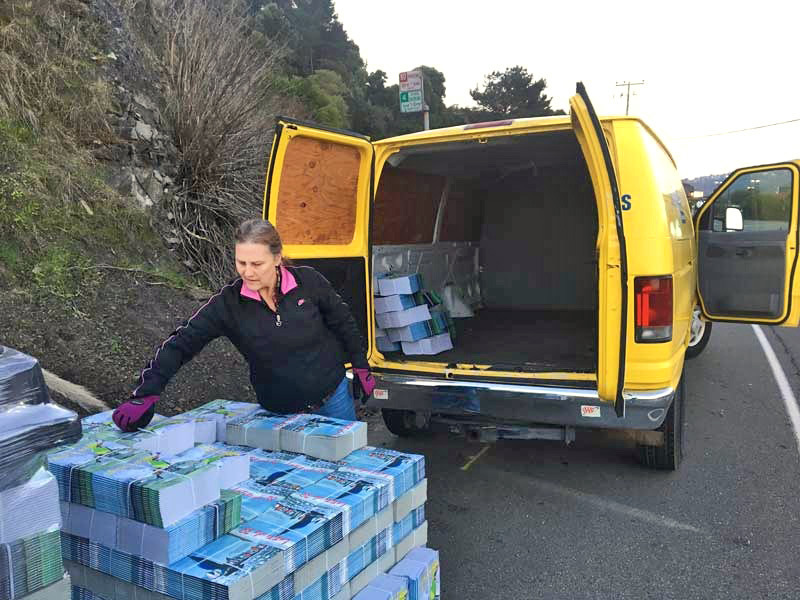
The perfect sailor’s job: 29 days off every month! This is a one-day-per-month position to deliver Latitude 38 magazines to our East Bay route, Richmond through Oakland, at the beginning of the month. Drivers act as ambassadors for the West Coast’s premier sailing and marine magazine. Applicants should feel comfortable engaging our wonderful distribution team and maintaining relationships with sailing and marine businesses in the Bay Area. An ideal candidate will keep track of the magazines delivered to each location and look out for new distribution locations.
To apply, send your résumé and cover letter with sailing experience by email to [email protected] with “Latitude Driver” in the subject line. Please, no phone calls!

